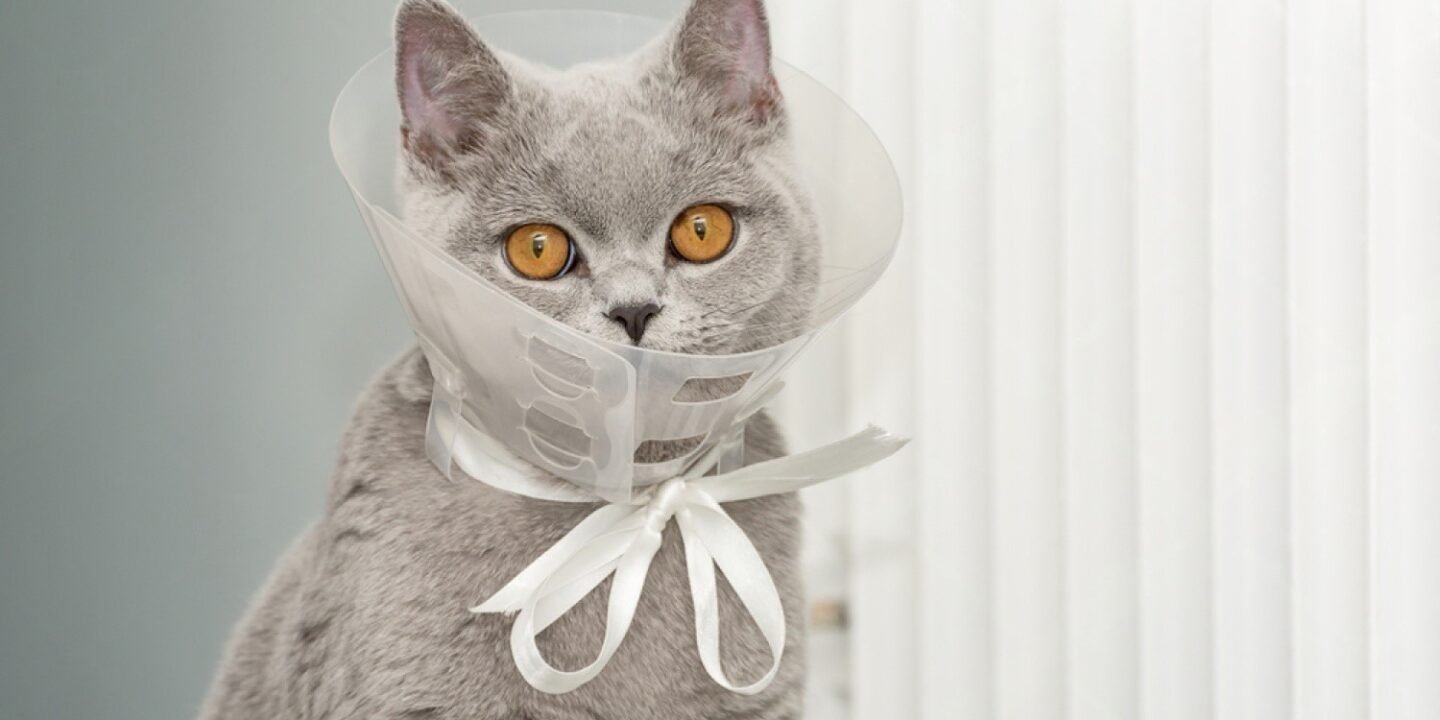Neutering a male cat is one of the most responsible decisions an owner can make for both the cat’s well-being and the community. The benefits of neutering a male cat go far beyond preventing unwanted litters—it also provides clear health advantages such as eliminating the risk of testicular cancer and lowering the chance of certain infections. Many owners also notice positive changes at home—less spraying, reduced aggression, and calmer behavior overall. Studies even show neutered cats tend to live longer, healthier lives when paired with proper nutrition and care. Like any medical procedure, timing and aftercare matter, but when done at the right stage, neutering provides lifelong benefits that far outweigh the risks.
Health Benefits of Neutering a Male Cat
- Eliminates the risk of testicular cancer and reduces prostate issues
Once the testicles are removed, the chance of developing testicular cancer is reduced to zero. Neutering also lowers the risk of benign prostatic hyperplasia and prostatitis, which are hormone-driven problems more common in intact males (Breckinridge Park Animal Hospital).
- Lowers the risk of FIV and FeLV transmission
Unneutered males are more likely to roam and fight, and deep bite wounds are a major route of spreading feline immunodeficiency virus (FIV) and feline leukemia virus (FeLV). Neutered cats fight less often, which directly decreases their chances of contracting these life-threatening diseases.
- Supports better oral and respiratory health
Neutering has been linked to a reduced risk of gingivitis, feline asthma, and even strong urine odor. These improvements are thought to be related to lower hormone levels and fewer secondary infections tied to territorial behaviors.
- Extends lifespan
Research shows neutered male cats live significantly longer than their intact counterparts. One large study found neutered males lived 62% longer than intact males, largely due to fewer roaming-related accidents, lower infection risk, and reduced cancer incidence (Wikipedia – Neutering).
Behavioral & Environmental Advantages
- Significant reduction in spraying and marking
One of the most noticeable changes after neutering is a sharp decrease in urine marking. Studies show that up to 85% of male cats stop spraying after the procedure, and many others reduce the frequency dramatically. This makes the home environment cleaner and reduces strong odors.
- Less aggression, roaming, and fighting
Neutered males are far less likely to fight over territory or mates. This not only reduces the risk of wounds and abscesses but also cuts down on costly vet visits. They are also less likely to roam long distances, which lowers the chance of car accidents and predator encounters (The Spruce Pets).
- Personality remains intact—just calmer
A common worry is that neutering will “change” a cat’s personality. In reality, neutered cats retain the same affection, playfulness, and quirks as before. The main difference is a calmer temperament and fewer hormone-driven behaviors like yowling, spraying, or picking fights.
Population & Owner Benefits
- Reduces overpopulation and shelter euthanasia
One unneutered male can father dozens of kittens each year, many of which end up in overcrowded shelters. The ASPCA estimates that millions of cats are surrendered or euthanized annually due to unplanned litters. By neutering, you directly help lower this burden on shelters and give existing cats a better chance at finding homes (ASPCA).
- More cost-effective than managing litters
Caring for just one litter involves costs for food, vaccines, deworming, and potential medical issues. In contrast, neutering is a one-time expense that typically ranges from $150–$300 in the U.S., with many shelters and nonprofit programs offering low-cost or even free services. Compared to the ongoing financial and time demands of raising kittens, neutering is the far more affordable choice.
Timing: When to Neuter Your Cat
Standard recommendation
Most veterinarians recommend neutering male cats around 4–5 months of age, once they reach a healthy body weight (minimum 2 pounds) [The Spruce Pets]. At this stage, recovery is generally quicker, the surgery is less complicated, and the risk of future reproductive-driven behaviors (like spraying or roaming) is minimized [Wikipedia].
Pediatric neuter (6–14 weeks)
Many animal shelters and high-volume spay/neuter programs successfully perform pediatric neutering between 6–14 weeks of age. Studies show kittens at this age tolerate anesthesia well and recover faster compared to older cats [PMC]. However, some veterinarians remain cautious with very early neuterings, especially for privately owned cats, due to concerns about long-term skeletal development and weight gain [Wikipedia].
Veterinary judgment matters
Ultimately, the best time to neuter depends on the individual cat’s health, breed, and lifestyle. For example, larger breeds may benefit from waiting until closer to 6 months, while cats in multi-cat households or shelters may be neutered earlier to prevent unwanted litter. Your veterinarian will consider your cat’s growth, overall health, and living environment before recommending the optimal timing.
Potential Risks & Considerations
While neutering offers many benefits, it’s important for cat owners to be aware of potential risks and considerations so they can make informed choices with their veterinarian.
Anesthetic and Surgical Risks
Like any surgery, neutering involves anesthesia. The risk is very low but not zero—studies place the mortality rate at around 0.11% in cats (Wikipedia). With modern veterinary practices, monitoring, and recovery protocols, complications are rare but worth acknowledging.
Weight Gain and Obesity
After neutering, a cat’s metabolism slows slightly, meaning they may require fewer calories to maintain a healthy weight. If diet and exercise aren’t adjusted, this can lead to obesity, which increases the risk of diabetes, arthritis, and other health problems. Simple steps like portion control, scheduled feedings, and encouraging play can prevent this issue.
Behavioral Limits
While neutering significantly reduces hormone-driven behaviors like spraying, roaming, or aggression, it’s not a guaranteed cure-all. If a cat has already learned certain habits (such as marking), neutering may not completely eliminate them. Training, environmental enrichment, and patience are often needed alongside the procedure.
Early Neuter Concerns
Shelters often perform pediatric neutering at 6–14 weeks to ensure adoption without risk of unwanted litters. Research supports this as generally safe, but some studies note potential links to orthopedic issues, urinary tract concerns, or increased fearfulness later in life. These risks remain under study, and most veterinarians recommend tailoring timing to the individual cat’s health, breed, and environment.
Bottom Line: Neutering is a safe, effective way to improve feline welfare and reduce population issues, but owners should discuss diet, activity, and timing with their veterinarian to minimize risks and maximize benefits.
Nutrition & Lifestyle Adjustments (Post-Neuter)
Once a cat is neutered, their metabolism changes. Studies show neutered cats burn slightly fewer calories, which means they are more prone to weight gain if their diet isn’t adjusted. To support long-term health:
- Diet modifications: Choose a high-quality diet with slightly reduced calorie density while still being rich in lean protein and controlled carbohydrates. This helps maintain muscle while preventing excess fat gain.
- Feeding routine: Consider measured meals rather than free-feeding. Portion control is key to preventing post-neuter obesity.
- Activity encouragement: Regular play sessions with wand toys, laser pointers, or climbing towers help cats burn energy, maintain muscle tone, and stay mentally stimulated.
- Vet-guided planning: Your veterinarian can help you set a healthy weight range for your cat and recommend diet adjustments over time, especially during the first year after neutering.
Post-Op Care (Step-by-Step)
The days immediately after neuter surgery are critical for proper healing. With the right care, most cats recover smoothly within 10–14 days. Here’s what to do:
- Monitor the incision site:
- Check daily for redness, swelling, or oozing.
- Some mild bruising is normal, but discharge or a bad odor means you should call your vet.
- Use an Elizabethan collar (e-collar) to stop licking or chewing the stitches.
- Restrict activity:
- Limit running, jumping, or climbing for about 10–14 days.
- Keep your cat indoors and avoid access to stairs or high surfaces until your vet confirms healing.
- Feeding adjustments:
- Offer small, light meals at first, since anesthesia can affect appetite.
- Resume their normal diet gradually as appetite returns.
- Veterinary check-up:
- Follow your vet’s schedule for a re-check, usually within 7–10 days.
- If sutures were used, your vet may need to remove them, or they may dissolve on their own, depending on the procedure.
FAQ’s
Will neutering change my cat’s personality?
No. Your cat will still be the same loving companion. Neutering simply reduces hormone-driven behaviors like roaming, spraying, and aggression. Many owners report that their cats seem calmer and more focused on play and companionship.
Should I neuter before or after he sprays?
Before. Neutering early is the best way to prevent urine marking altogether. Once spraying becomes a learned habit, surgery may reduce it, but not always eliminate it.
When can my cat go outside after surgery?
Wait at least 14 days and only once your veterinarian confirms the incision is fully healed. Early outdoor access risks wound reopening or infection.
How much does neutering cost in the U.S.?
On average, the procedure costs $150–$300 at private veterinary clinics. Low-cost programs through shelters and non-profits may significantly reduce this cost, making neutering accessible to more families.
Conclusion
Neutering your male cat is one of the most responsible and health-boosting decisions you can make as a pet owner. The benefits of neutering a male cat include preventing serious medical issues, reducing hormone-driven behavioral problems, increasing lifespan, and helping control pet overpopulation. Timing matters—earlier neutering is generally more effective at preventing unwanted behaviors, but your veterinarian can help determine the best age for your individual cat. Pairing surgery with the right nutrition, exercise, and post-op care ensures your cat thrives in the long term.





